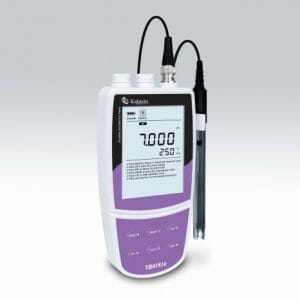Pathological anatomy is a medical discipline dedicated to the study of human diseases through the examination of cells and tissues. In this context, ion meters, also known as ionometers, play a crucial role by measuring the activity of specific ions in aqueous solutions. But how do these devices influence the field of pathological anatomy?
Ions play a fundamental role in numerous biochemical functions crucial to our organism, such as pH regulation, transmission of electrical impulses through neurons, and muscle contraction and relaxation. These devices allow precise analysis of the concentration of these elements, thus providing relevant scientific data for the diagnosis, treatment and prevention of various diseases.
Optimal Diagnosis and Analysis Thanks to Ion Meters
One of the most important uses in pathological anatomy is the possibility to determine ionic variations in pathological tissues and cells.
Neoplastic diseases, such as cancer, often cause alterations in ion levels, mainly calcium, potassium and sodium. In addition, they allow a quantitative characterization of these fluctuations, providing a deeper insight into the disease in question and enabling the identification of various abnormalities that might go undetected through traditional histological analysis.
By measuring ion activity, pathologists can more accurately track disease progression, adjust treatments and evaluate drug effectiveness, ensuring personalized, patient-centered medicine.
Future Innovations and Challenges for Ion Meters in Anatomic Pathology
With technology advancing by leaps and bounds, ion meters are becoming increasingly accurate and affordable. In the future, we might expect even smaller and more reliable devices that integrate seamlessly into the workflow of anatomic pathology laboratories.
However, there are a number of challenges to overcome. For example, although ion activity is a very useful indicator in the identification of various diseases, its interpretation can be complex and requires a high level of expertise. In addition, researchers are working to improve the ability of ion meters to detect and measure less common, but equally important, ions such as magnesium, iron or chlorine.
What we at Kalstein have for you
In conclusion, ion meters are proving to be an essential tool in anatomic pathology, providing a new dimension in the study and treatment of disease. Certainly, more research and clinical validation is needed, but there is no doubt that these powerful devices have the potential to revolutionize pathological diagnosis and treatment.
Learn more about our equipment HERE, remember that we are manufacturers and we offer not only quality but a price you can not resist, our consultants are waiting for you, a trained staff to answer your questions at the time of your purchase. HERE


